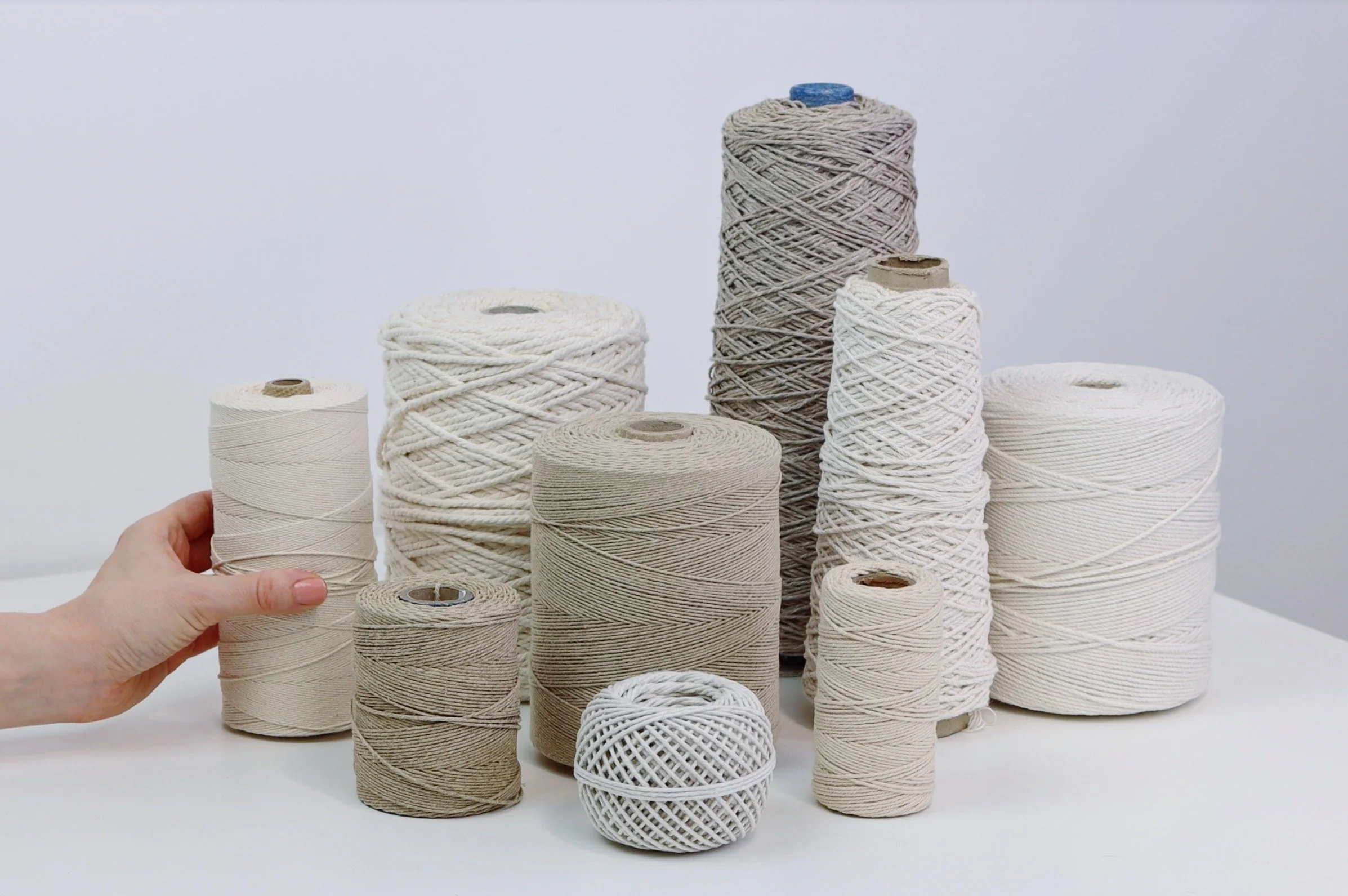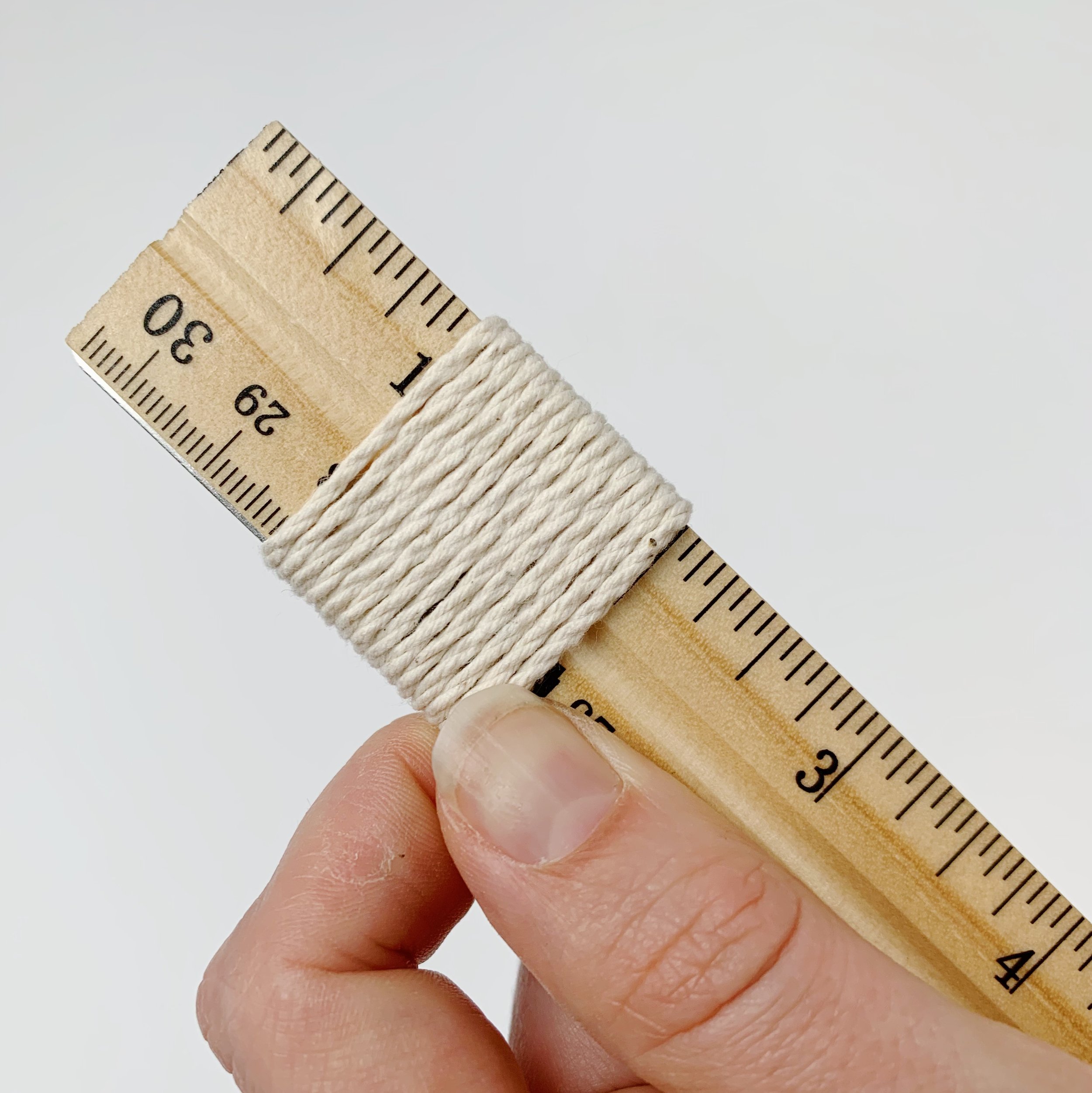The Best Warp Yarns For Rug Weaving
Choosing the right materials is one of the most important decisions when it comes to weaving a rug. Selecting a durable weft and a sturdy warp will mean the difference between a rug that is able to withstand the daily wear and tear of lying on the floor, or a rug that falls apart after a few years of use.
For those of you who are new to weaving, the warp is what we call the yarn that is stretched over the loom and held under tension. Meanwhile the weft is the yarn that is threaded through it, passing over and under the warp strands to make up the woven textile.
I’ve written before about choosing a weft yarn for rug weaving, but what about the warp? In my opinion, the warp yarn is even more crucial than the weft, as it is the foundation of your rug. It determines the texture, weight and stiffness of the finished piece. For example, a thin, spaced-out warp will give you a loose, floppy rug, whereas a thick, close-spaced warp will create a rug that is solid and firm.
I have experimented with a lot of warps over the years, but here are the three that I recommend.
Cabled Cotton Warp
The cabled cotton warp is the main warp I recommend for beginners. It’s the one I provide in my rug weaving workshops and use throughout my Rug Weaving On An Upright Loom and Rug Weaving On A Mirrix Loom online courses. Cotton is a strong, durable fibre and it’s also very springy and elastic. When stretched it will easily snap back into place, so you don’t have to keep increasing the tension of the warp as you weave.
The cabled cotton warp is made by plying single strands of cotton together, and then spinning those plyed strands to make a thicker cable or cord. This makes it stronger and more durable than your average cotton string. When you’re looking for a decent cotton warp, I recommend looking at how many single strands it is comprised of, why the ply is and whether it’s cabled from plied yarn or singles.
Here at Balfour & Co we have a cabled cotton warp that we sell as part of our rug weaving kits. It’s not currently available as a separate product, but in the meantime we highly recommend the 12/24 cotton warp from George Weil.
Extra Thick Cotton Warp
Alongside the standard cotton warp, I also recommend this extra thick cotton cord for rug weaving. This is also a cabled cotton cord, but it’s much thicker than a standard rug warp. And it’s something that I discovered completely by accident, from a mishap when ordering online.
Back in my early, early days of rug weaving, I bought several cones of extra thick cotton cord, thinking I was getting a much thinner yarn. When it arrived it was so thick that I had no idea how I could possibly warp a loom with it! But after lots of trial and error, I found my groove with it and now it is one of my favourite warps for rug weaving.
This extra thick cotton warp creates a strong core in the centre of my rugs, and feels solid and firm underfoot. I like to weave with it at four to six warp strands per inch, and then I pack the weft down firmly over it to get a tighter weave. You can order it in 1kg cones, directly from our online shop here.
Linen
When I’m not working with cotton, my go-to warp is linen.This is what I use for almost all of my larger tapestries and rugs, and throughout my Rug Weaving On A Floor Loom online course. It’s a denser fibre than cotton, so it doesn’t need the same cabling process to strengthen it. The spinning process also bonds the fibres together more, so a linen warp is harder to pick apart than cotton. So even a thin linen warp will create a rigid core within the rug itself. It also has a gorgeous silver lustre and a fresh summery smell, but I do find it is tougher on my hands when I weave through it.
However, be warned- linen is not as elastic as cotton! Cotton will spring back easily after being stretched. Linen, on the other hand, will stay very rigid, and slowly start to stretch out when it’s held under tension. When I weave with linen on a frame loom, I often have to add warp sticks to increase the tension as I weave. But on a floor loom, I can easily increase the tension any time, so this is less of a problem.
If you're weaving a rug for the first time, I recommend starting out with cotton and then experimenting with linen once you have a bit more practice. But don’t be put off entirely by linen’s trickiness! It’s worth persevering with, and you won’t regret using it for your rugs.
We are working with our linen warp supplier to get more stock, but in the meantime we recommend this 6/6 linen warp from George Weil
Ordering A Warp Online
As you might have guessed from my own misadventures with the extra thick cotton warp, ordering warp yarn online can be a challenge. I’ve included links to where you can purchase yarn right here in this blog post, but if you’re shopping further afield, here are some things to look out for.
First of all, you may have noticed that many yarns sold online have yarn counts or yarn measurements attached to them (e.g. 6/6 linen warp or 12/24 cotton warp.) These numbers are there to tell you how many strands are plied up into the yarn and how long the yarn is in relation to its weight. The problem with these measurements, however, is that they change from yarn to yarn and from country to country. Cotton, linen and wool are all measured differently, and different countries have different measuring systems for each one. I am working on a longer blog post which explains this in depth, but to keep things simple for now, here are the measurements I use to gauge whether a warp yarn is what I’m looking for.
Look At The Weight To Length Ratio - Alongside the yarn measurements, many online shops will often have the weight of the yarn and the approximate length. The rule of thumb here is that the thicker the yarn, the shorter the length you will get out of a pound or kilo. A good thick warp yarn will be in the region of 300-400 yards per pound, or 600-800 metres per kilo. If you’re looking at a potential warp yarn and it’s listed as being upwards of 700 yards per pound, or 1400 metres per kilo, that yarn will be too thin.
Look At The WPI - Another measurement that I do find super, super helpful is the WPI. WPI stands for “wraps per inch”. You work it out by wrapping the yarn around a ruler and counting the number of strands that it takes to fill a full inch. This is the simplest way to measure your yarn at home, and if a customer emails me about it I can very easily get out my ruler and check the thickness of a yarn in less than a minute. Most good yarn shops will have the WPI listed on their products. For rug weaving, I recommend using a warp that is 8 - 16 WPI.
Look At The Recommended EPI - If a yarn shop doesn’t have a WPI measurement, they will sometimes have a recommended EPI. EPI stands for “ends per inch”. An “end” is the term for a single warp strand on the loom. EPI is not the same as WPI, because with EPI you need to have space between the warps for the wefts to pass through. For rug weaving, you should look for a yarn that’s 4 - 8 EPI.
I hope this blog post has given you some ideas for the types of warp yarns you can use for your rug, and given you confidence in sourcing these warps for yourself. Here at Balfour & Co we’re working all the time to expand our range of yarns, so make sure you’re signed up to our newsletter to be the first to hear when new yarns are available.
And if you’d like to learn more about rug weaving with different types of warps, check out our Rug Weaving On An Upright Loom online course. It covers weaving with cotton and linen warps, and how the different weights and thicknesses affect your finished rug.
Thanks for reading!






